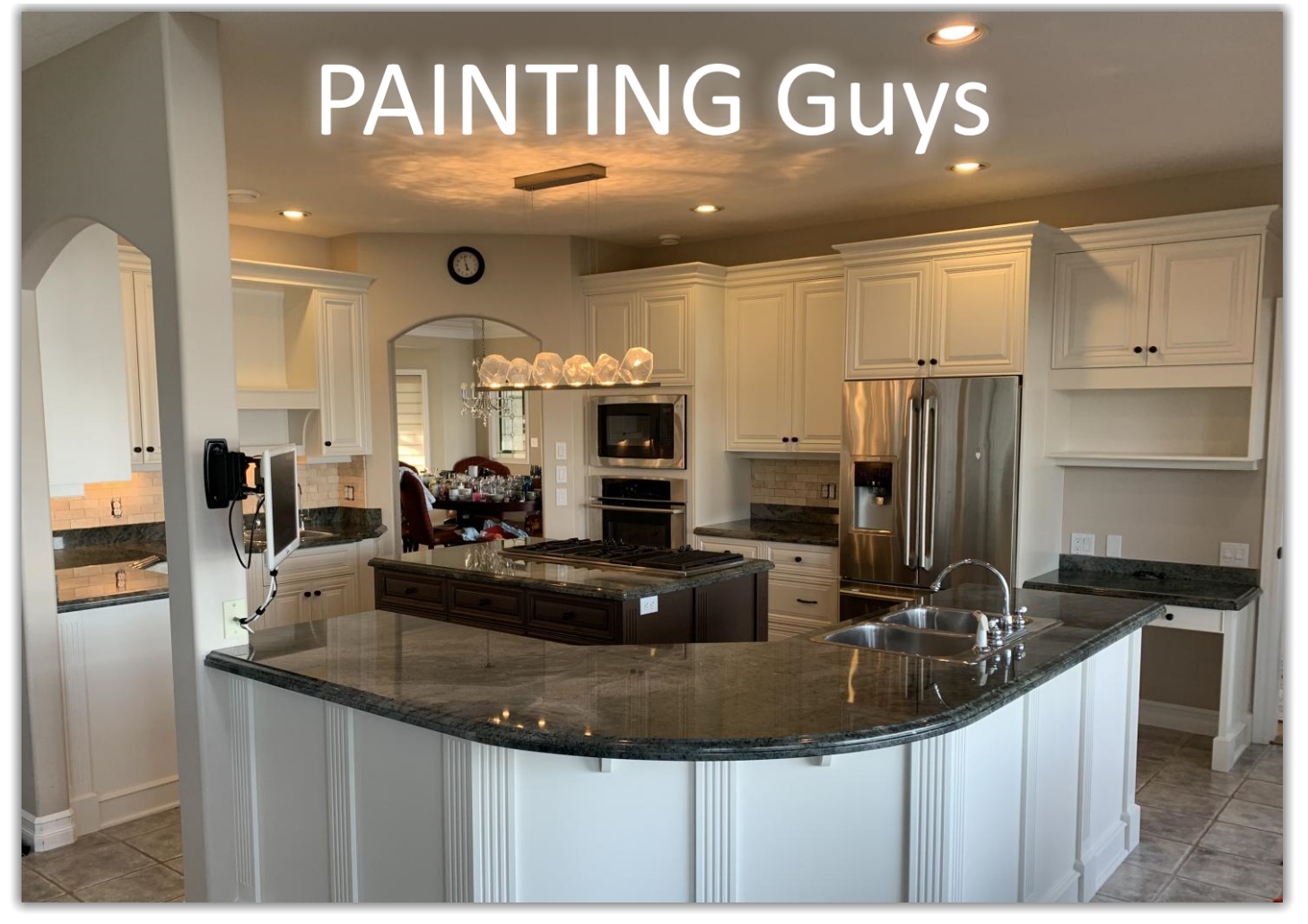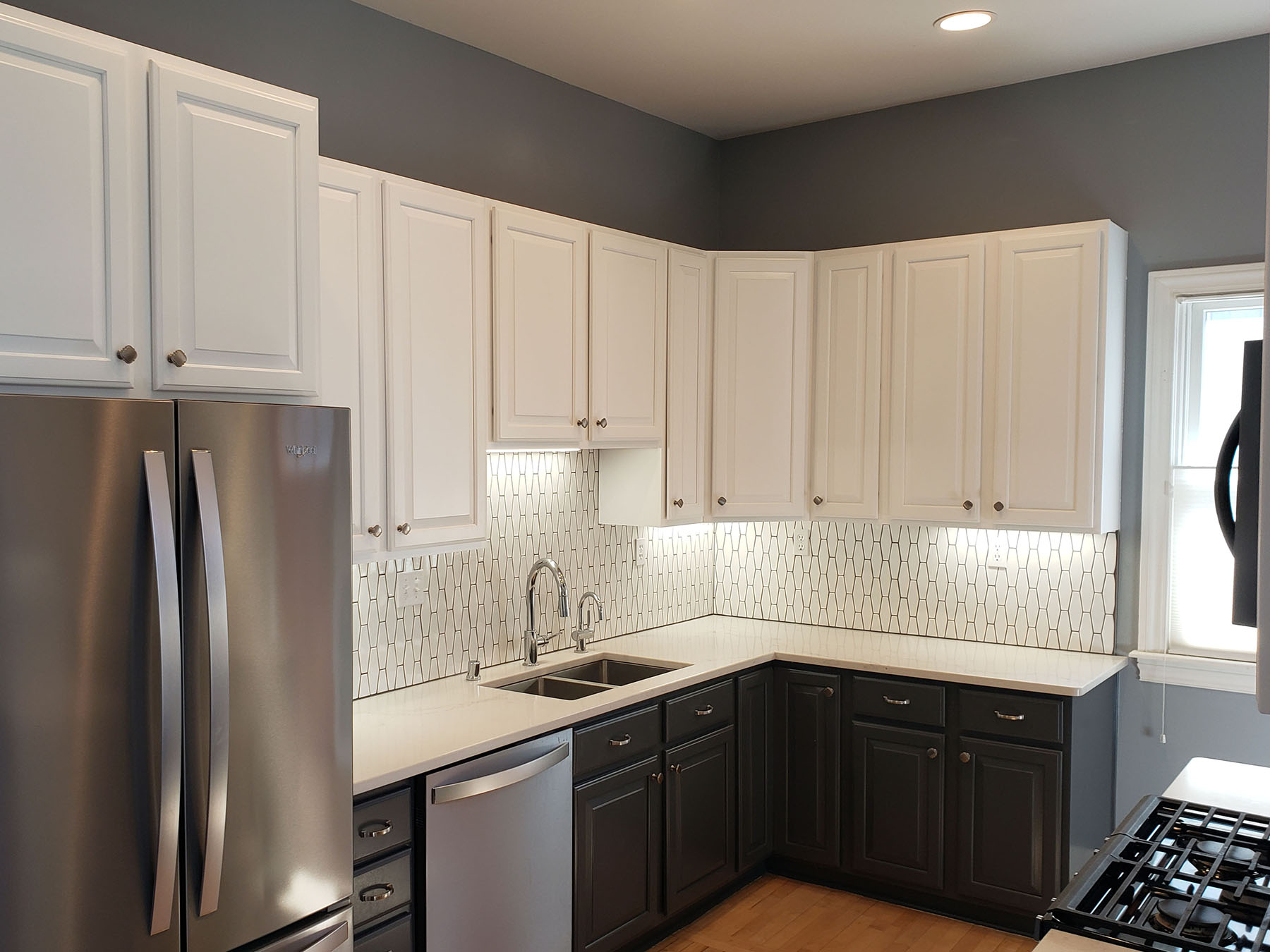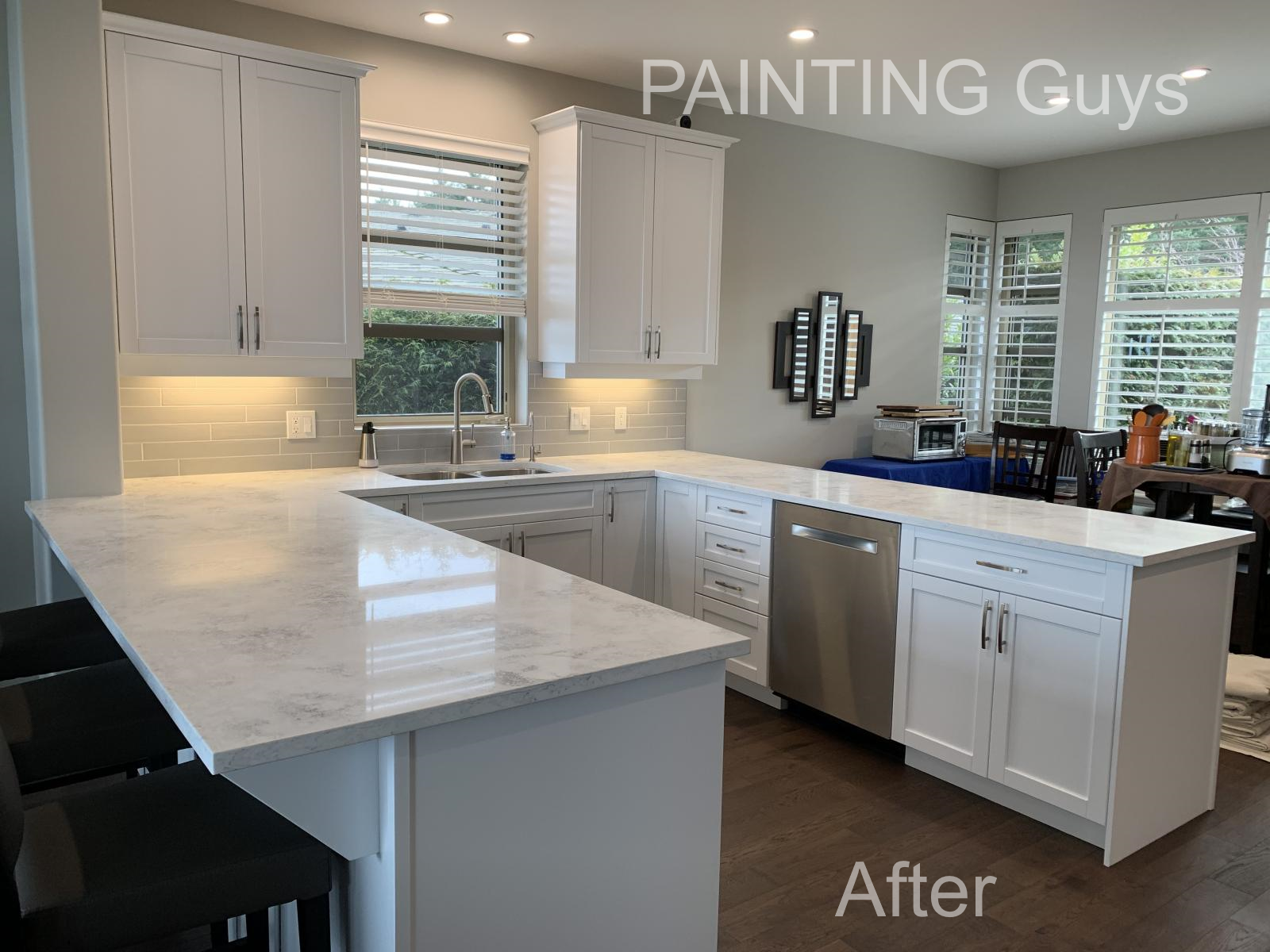Edmonton Kitchen Cabinet Painting Companies: Kitchen Cabinets Painting Edmonton

Choosing the right company for your Edmonton kitchen cabinet painting project is crucial for a successful outcome. Several factors, including service offerings, pricing, and customer satisfaction, should be carefully considered. This section compares three prominent Edmonton-based companies, offering insights into their respective strengths and weaknesses.
Edmonton Kitchen Cabinet Painting Companies: A Comparison
The following table provides a summary comparison of three Edmonton kitchen cabinet painting companies. Note that pricing and customer ratings are subject to change and reflect general trends observed at the time of writing. Always verify directly with the company for the most up-to-date information.
| Company Name | Service Offered | Price Range | Customer Rating (Average) |
|---|---|---|---|
| Company A (Example) | Full-service cabinet painting, including prep, painting, and finishing. Offers various paint types and finishes. | $5,000 – $10,000 (depending on cabinet size and complexity) | 4.5 out of 5 stars |
| Company B (Example) | Cabinet painting services, focusing on efficient processes and quick turnaround times. Offers limited paint type options. | $4,000 – $8,000 (depending on cabinet size and complexity) | 4.0 out of 5 stars |
| Company C (Example) | Specializes in high-end custom cabinet painting, offering a wide range of finishes and paint types. Focuses on meticulous detail and craftsmanship. | $7,000 – $15,000 (depending on cabinet size and complexity and chosen finishes) | 4.8 out of 5 stars |
Kitchen Cabinet Painting Preparation Process, Kitchen cabinets painting edmonton
Thorough preparation is paramount to achieving a long-lasting and aesthetically pleasing finish. A typical Edmonton kitchen cabinet painting company will follow a process similar to this:
- Cleaning: Cabinets are thoroughly cleaned to remove grease, grime, and any existing coatings. This often involves using degreasers and specialized cleaning solutions to ensure a clean surface for optimal paint adhesion.
- Disassembly (if necessary): Depending on the project’s complexity and the company’s approach, cabinets may be disassembled for easier access and more thorough painting. Hardware is removed and stored safely.
- Sanding: Sanding smooths the cabinet surfaces, removing imperfections and creating a better surface for paint adhesion. Different grits of sandpaper may be used, starting with coarser grits to remove larger imperfections and finishing with finer grits for a smooth finish.
- Repairing: Any damage to the cabinets, such as chips or scratches, is repaired using wood filler or other appropriate materials. Once dried, these areas are sanded smooth.
- Priming: A primer is applied to seal the wood and improve paint adhesion. The primer also provides a uniform base coat, ensuring even color distribution and preventing the wood grain from showing through the final coat of paint.
Paint Types Used for Kitchen Cabinet Painting
The choice of paint significantly impacts the final look, durability, and longevity of the painted cabinets. Several paint types are commonly used in Edmonton:
- Latex Paint: A water-based paint that is easy to clean up and offers good durability. It’s relatively low in VOCs (Volatile Organic Compounds), making it a more environmentally friendly option. However, it might not be as durable as other options in high-traffic areas.
- Enamel Paint: An oil-based paint known for its exceptional durability, hardness, and resistance to scratches and moisture. It provides a very smooth, high-gloss finish, but it requires solvents for cleanup and has higher VOCs.
- Acrylic-Alkyd Hybrid Paint: This combines the best features of both latex and enamel paints. It offers the durability of enamel with the easier cleanup of latex, providing a balance between performance and convenience. It tends to have lower VOCs than traditional enamel paints.
Choosing the Right Color and Finish

Selecting the perfect color and finish for your Edmonton kitchen cabinets is crucial for achieving a stylish and functional space. The right choices can dramatically impact the overall feel of your kitchen, influencing its brightness, warmth, and even its perceived size. Careful consideration of your kitchen’s style, natural light, and personal preferences is essential for a successful outcome.
Edmonton Kitchen Color Palettes
Three distinct color palettes cater to diverse Edmonton kitchen styles and lighting conditions. These palettes offer a blend of popular trends and timeless elegance, ensuring a visually appealing and enduring result.
- Warm Neutral Palette: This palette features creamy whites, warm beige tones, and subtle hints of taupe. It works beautifully in kitchens with limited natural light, creating a cozy and inviting atmosphere. Consider using a creamy white for the cabinets, a warm beige on the walls, and taupe accents in hardware or backsplash tiles. This palette evokes a sense of calm and sophistication.
- Modern Gray Palette: A sophisticated and contemporary choice, this palette uses various shades of gray, from soft dove gray to charcoal gray, accented with crisp white or black. This works well in kitchens with ample natural light, offering a sleek and modern aesthetic. Gray cabinets paired with white countertops and black hardware create a striking contrast. This palette is both versatile and stylish.
- Bright and Airy Palette: This palette uses soft blues, greens, and whites to create a bright and airy feel. Ideal for kitchens with abundant natural light, it provides a fresh and cheerful atmosphere. Light blue cabinets with white trim and green accents (such as plants or a backsplash) evoke a sense of calm and spaciousness. This palette is perfect for a modern farmhouse or coastal-inspired kitchen.
Cabinet Finish Options
The finish significantly impacts the look and durability of your painted kitchen cabinets. Different finishes offer varying degrees of sheen and resistance to scratches and stains. Understanding these differences is vital for making an informed decision.
| Finish Type | Description |
|---|---|
| Matte | A completely flat finish with no shine. It’s excellent for hiding imperfections but can be more susceptible to scratches and stains. It offers a sophisticated, minimalist look. |
| Satin | A low-sheen finish with a slightly velvety appearance. It offers a good balance between durability and a subtle sheen, making it a popular choice for kitchens. It’s easier to clean than matte but hides imperfections less effectively. |
| Semi-Gloss | A finish with a moderate sheen, offering good durability and easy cleaning. It’s more resistant to scratches and stains than matte or satin finishes. It provides a more polished look than satin. |
| Gloss | A high-sheen finish with a reflective surface. It’s the most durable option, highly resistant to scratches and stains, and easy to clean. However, it shows imperfections more readily. |
Successful Edmonton Kitchen Cabinet Painting Projects
Several successful kitchen cabinet painting projects in Edmonton showcase the transformative power of color and finish choices.
A recent project in a southwest Edmonton home utilized a warm neutral palette with creamy white shaker-style cabinets and a satin finish. The soft sheen complemented the warm lighting and created a welcoming atmosphere. The client’s choice was effective because it maximized the limited natural light and created a sophisticated, yet cozy feel.
Another project in a modern condo in downtown Edmonton featured a modern gray palette with charcoal gray cabinets and a semi-gloss finish. The semi-gloss finish provided easy maintenance and enhanced the sleek, contemporary look of the kitchen. The dark gray cabinets created a dramatic contrast with the white countertops and stainless steel appliances, a successful choice for a small but stylish kitchen.
A kitchen renovation in a family home in Mill Woods incorporated a bright and airy palette. Soft blue cabinets with a satin finish were paired with white subway tiles and natural wood countertops. This combination was successful because it brightened the space, visually expanding the kitchen and creating a relaxed and cheerful atmosphere. The satin finish provided a good balance of durability and subtle sheen, suitable for a high-traffic family kitchen.
The Painting Process and Maintenance

Transforming your kitchen with a fresh coat of paint on your cabinets is a rewarding project. It significantly impacts the look and feel of your entire kitchen, offering a cost-effective way to update your space. Understanding the process and the necessary maintenance will ensure your cabinets remain beautiful for years to come. This section details the steps involved in professional kitchen cabinet painting and provides guidance on maintaining your newly painted surfaces.
Kitchen Cabinet Painting: A Step-by-Step Guide
The process of professionally painting kitchen cabinets is meticulous and involves several key steps to ensure a durable and aesthetically pleasing finish. A thorough approach guarantees a long-lasting result.
- Initial Consultation and Preparation: This involves a detailed discussion with the client to determine the desired color, finish, and any specific requirements. The painter will assess the cabinets, noting any damage or imperfections that need addressing before painting begins. This stage also includes providing a detailed quote and establishing a project timeline.
- Surface Preparation: This crucial step involves cleaning the cabinets thoroughly to remove grease, grime, and any existing finishes. This might involve degreasing agents and sanding to create a smooth surface for optimal paint adhesion. Any damaged areas are repaired and filled before sanding again for a flawless finish.
- Priming: Applying a high-quality primer is essential for ensuring the paint adheres properly and provides a uniform base coat. The primer selected will depend on the type of existing finish and the desired final result. Multiple coats may be necessary for optimal coverage and adhesion.
- Painting: This involves applying several thin coats of paint, allowing each coat to dry completely before applying the next. The painter will use appropriate techniques to ensure a smooth, even finish, paying close attention to detail in corners and edges. The type of paint used (e.g., lacquer, enamel) will impact the drying time and the final sheen.
- Finishing Touches: Once the paint is fully cured, any necessary hardware is reinstalled. A final inspection is conducted to ensure the quality of the work meets the client’s expectations. This might include touching up any minor imperfections.
- Clean-up: The final step involves a thorough clean-up of the work area, removing all debris, paint spills, and protective coverings.
Maintaining Painted Kitchen Cabinets
Proper maintenance is crucial to prolong the life and beauty of your newly painted kitchen cabinets. Following these steps will help keep them looking their best for years to come.
- Regular Cleaning: Wipe down your cabinets regularly with a soft, damp cloth. Avoid abrasive cleaners or scouring pads that can scratch the surface. For tougher stains, use a mild dish soap solution.
- Avoid Harsh Chemicals: Refrain from using harsh chemicals, such as bleach or ammonia-based cleaners, as these can damage the paint finish. Always test any cleaning solution on an inconspicuous area first.
- Protect from Moisture: Excess moisture can damage the paint. Immediately wipe up any spills or splashes. Ensure proper ventilation in your kitchen to prevent condensation buildup.
- Handle with Care: Avoid banging or scraping the cabinets with sharp objects. Use pot holders or trivets to protect the surfaces from hot pans or dishes.
- Periodic Touch-Ups: Over time, minor chips or scratches may appear. Use touch-up paint to repair these imperfections promptly to prevent further damage.
